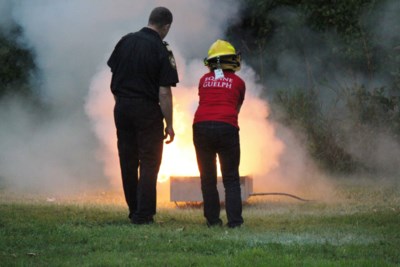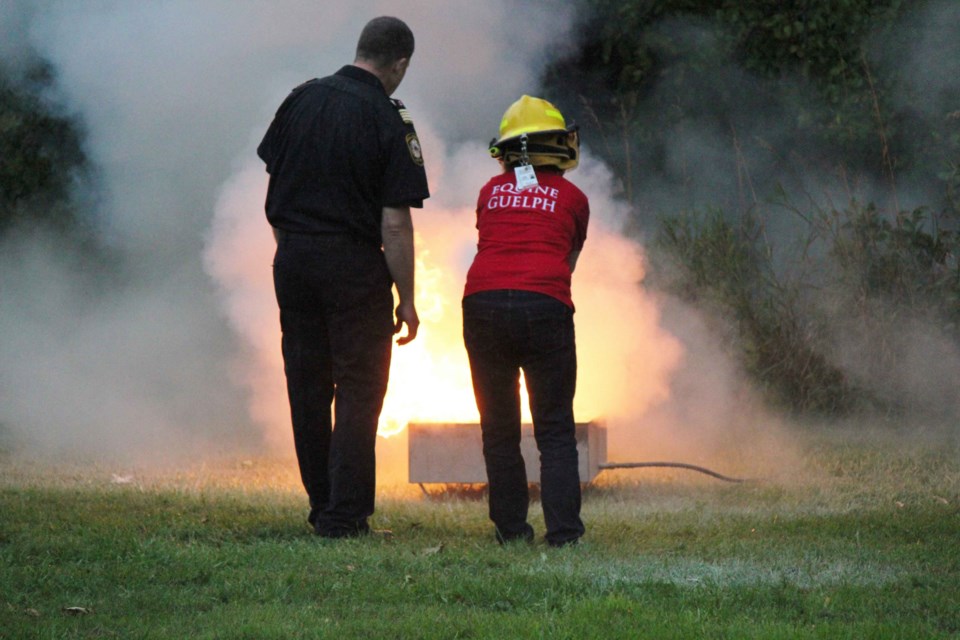Barn fires, like house fires, are a stubborn, tragic occurrence in Ontario.
From 2012-2014, barn fires represented an average annual loss of more than $25 million. And that’s not counting livestock, farm equipment or commodities or products in storage. Firefighters battle at least 135 barn fires every year.
Most often, the causes cited are mechanical or electrical failure, misuse of an ignition source or equipment, or a design, construction or maintenance deficiency.
They’ve hit close to home this year. On the evening of January 4, a fire engulfed a barn at an elite stable facility in Puslinch, killing 43 horses. Then 10 days later, near Mount Forest, a dozen more horses died in a barn fire.
Distance wise, the two tragedies were a mere 45 minutes apart. Even seasoned professionals who’ve experienced barn fires before were exceptionally rocked by the loss, by the proximity of the affected stables and by the fact so little time had passed between them.
After the Mount Forest fire, the province issued a plea reminding all farmers to be vigilant against fires, and offering tips about how to best manage their operations to avoid such .
Ross Nichols, the provincial fire marshal and chief of emergency management, said the January incidents underscore the need for owners and operators to identify - and eliminate - potential fire risks on agricultural properties, including in their barns and stables.
 Participants practice fire extinguishing techniques last fall at Equine Guelph's technical large animal emergency rescue training. Photo by Toni Macpherson.
Participants practice fire extinguishing techniques last fall at Equine Guelph's technical large animal emergency rescue training. Photo by Toni Macpherson.For example, he said barn owners should have qualified professionals complete assessments of all farm buildings.
All electrical equipment should be inspected yearly by a licensed electrical contractor, including wiring, mechanical and heating systems. And when heat lamps are required, the immediate area should be protected with non-combustible sheathing, keeping the area around the heat lamp clear of clutter or bedding materials that could catch fire.
Other tips include checking exposed electrical equipment for corroded parts, avoiding storing dangerous fuels and chemicals such as gasoline, cleaning fluids or solvents inside barns, and always keep a fire extinguisher on hand.
Education is a key to prevention. At the University of Guelph, as part of Canada’s first degree program dedicated to equine management, students take a fire safety course, offered through the fire department.
“They focus on facility design with a conscious regard for building fire safety measures into construction or renovation of horse barns as part of their degree studies,” says program coordinator Prof. Katrina Merkies of the Department of Animal Biosciences.
Gayle Ecker, Director of Equine Guelph, encourages horse facility owners to invite their local fire prevention officer to their barn, to walk through it and help them identify fire risks and how to reduce them. Ecker says most horse owners rarely get any training on this critical area of responsibility as an animal owner.
 Equine management students receive fire safety training as part of their degree program at the University of Guelph. They're pictured here earlier this month at the university, where they staged their first career night. Photo by Katrina Merkies.
Equine management students receive fire safety training as part of their degree program at the University of Guelph. They're pictured here earlier this month at the university, where they staged their first career night. Photo by Katrina Merkies.“We are working to give them the tools and educational opportunities so they can reduce the risks on their own property through safety audits of their barn,” she says.
She underlines two key points to reduce fire risks on farm: if possible, store all straw and hay in a separate building, and like fire marshal Nichols, says urges barn owners to check all electricals. That’s particularly important for horse barns, which can put more demand on an existing electrical system in barns converted from other uses, because of increased lighting, heated water buckets and heated tack rooms.
As a lead-up to the huge Can-Am Equine Expo in April in Markham, Equine Guelph will be leading a social media fire prevention campaign called #nobarnfires. Tweets with fire prevention tips along with a video will be going out shortly.
Last week, Equine Guelph announced it would be offering a two-week online course shortly called Equine Behaviour and Safety, which includes fire safety.
And finally, the Ontario Ministry of Agriculture, Food and Rural Affairs offers a number of fire prevention resources, including a publication called Reducing the Risk of Fire on Your Farm, for livestock owners and crop farmers alike.
With all these efforts underway and resources available, hopefully 2016 will proceed in sharp contrast to its unfortunate start.
